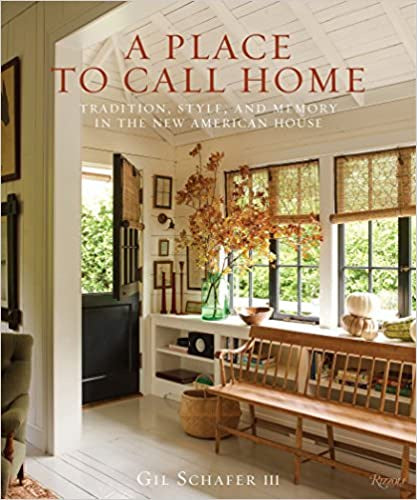Common Ground
Place to Call Home by Schafer
Place to Call Home by Schafer
Couldn't load pickup availability
For award-winning architect Gil Schafer, the most successful houses are the ones that celebrate the small moments of lifehouses with timeless charm that are imbued with memory and anchored in a distinct sense of place. Essentially, Schafer believes a house is truly successful when the people who live there consider it home. It۪s this beliefand Schafer۪s rare ability to translate his clients۪ deeply personal visions of how they want to live into a physical home that reflects those dreamsthat has established him as one of the most sought-after, highly-regarded architects of our time.
In his new book, A Place to Call Home Schafer follows up his bestsellingThe Great American House, by pulling the curtain back on his distinctive approach, sharing his process (complete with unexpected, accessible ideas readers can work into their own projects) and taking readers on a detailed tour of seven beautifully realized houses in a range of styles located around the country each in a unique place, and each with a character all its own. 250 lush, full color photographs of these seven houses and other never-before-seen projects, including exterior, interior, and landscape details, invite readers into Schafer's world of comfortable classicism.
Opening with memories of the childhood homes and experiences that have shaped Schafer's own history, A Place to Call Home gives the reader the sense that for Schafer, architecture is not just a career but a way of life, a calling. He describes how the many varied houses of his youth were informed as much by their style as by their sense of place, and how these experiences of home informed his idea of classicism as a set of values that he applies to many different kinds of architecture in places as varied as the ones he grew up in. Because while Schafer is absolutely a classical architect, he is in fact a modern traditionalist, and A Place to Call Home showcases how he effortlessly interprets traditional principles for a multiplicity of architectural styles within contemporary ways of living.
Sections in Part I include the delicate balance of modern and traditional aesthetics, the juxtaposition of fancy and simple, and the details that make each project special and livable. Schafer also delves into what he refers to as the spaces in between,those often overlooked spaces like closets, mudrooms, and laundry rooms, explaining their underappreciated value in the broader context of a home. Part of Schafer's skill lies in the way he gives the minutiae of a project as much attention as the grand aesthetic gestures, and ultimately, it۪s this combination that brings his homes to life.
Part II of the book is the story of seven houses and the places they inhabiteach with a completely different character and soul: a charming cottage completely rebuilt into a casual but gracious house for a young family in bucolic Mill Valley, California; a reconstructed historic 1930s Colonial house and gardens set in lush woodlands in Connecticut; a new, Adirondack camp-inspired house for an active family perched on the edge of Lake Placid with stunning views of nearby Whiteface Mountain; an elegant but family-friendly Fifth Avenue apartment with a panoramic view of Central Park; a new timber frame and stone barn situated to take advantage of the summer sun on a lovely, rambling property in New England; a new residence and outbuildings on a 6,000 acre hunting preserve in Georgia, inspired by the historic 1920s and 1930s hunting plantation houses in the region; and Schafer's own, deeply personal, newly-renovated and surprisingly modern house located just a few feet from the Atlantic Ocean in coastal Maine. In Schafer۪s hands, the stories of these houses are irresistibly readable. He guides the reader through each of the design decisions, sharing anecdotes about the process and fascinating historical background and contextual influences of the settings. Ultimately, the houses featured in A Place to Call Home are more than just beautiful buildings in beautiful places. In each of them, Schafer has created a dialogue between past and present, a personalized world that people can inhabit gracefully, in sync with their own notions of home. Because, as Schafer writes in the book, he designs houses not for an architect۪s ego, but [for] the beauty of life, the joys of family, and, not least, a heartfelt celebration of place.
Return & Exchange Policy
Return & Exchange Policy
ONLINE RETURN POLICY:
Please note:
- Refunds are credited to the original form of payment
- Returns will be processed 3-5 business days after Epergne receives the item(s). Bank issued credit cards may take 5-7 business days for the refund to post to your account.
- Shipping charges are not refunded
- Exchanges are processed as inventory allows and customers will be charged for the additional shipping of the exchanged item(s).
- ALL DISCOUNTED or SALE ITEMS are "FINAL SALE"and CANNOT be exchanged or returned.
- Customers are responsible for the shipping on all returns and exchanges.
IN-STORE RETURN POLICY:
HOLIDAY RETURN POLICY:
Merchandise purchased between November 18, 2025 and December 25, 2025 must be returned by January 25, 2026 for STORE CREDIT. Store Credit must be used within 1 year of return date.


